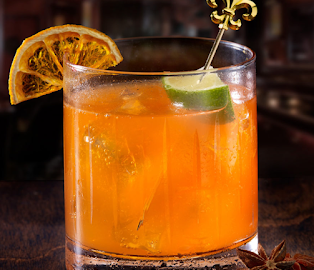

One of the leading causes of foodborne illness, cross-contamination happens when harmful bacteria or allergens are accidentally transferred from one food to another. It can occur at any point up to the moment food is served and consumed. That wide window of vulnerability paired with a sneaky, invisible nature can make cross-contamination a challenging concept to teach and a tough foe to guard against.
When employees are new or working at a fast pace—both frequent situations in modern foodservice—critical steps can get skipped and lead to dangerous mistakes.
Having the right tools and visual reminders in place can help prevent food safety mishaps across your foodservice operation.
1. Keep Work Surfaces Clean

Cleaning is a constant need: start with clean surfaces and ware, and keep cleaning to ensure surface contaminants don’t get picked up by clean wares, utensils, or ready-to-eat foods.
Anything that makes cleaning easier and more convenient for staff, such as disposable, yet reusable Blu Towels by Mercer Culinary, will increase the odds that it will happen as often as it needs to.
To learn more about high tech advancements to keep kitchen surfaces cleaner, see 4 Technology Advancements That Can Make Your Kitchen Safer.
2. Make Handwashing Convenient
Even with frequent changes of disposable gloves, clean hands are imperative to food safety. An adequate number of dedicated handwash stations equipped with soap and paper towels are a necessity. A recent article published by FE&S cited the following general guideline while noting that local health codes prevail: “Commercial kitchens should allow for 1 hand sink for every 5 employees, 1 hand sink for every 300 ft2 of facility space, and 1 hand sink for each prep and cooking area.”

For historic buildings, kitchens with space limitations, or outdoor applications, mobile hand sinks can help meet this critical hygiene need.
The FWE Mobile Hand Sink provides touchless handwashing, indoors and out.
Heavy-duty stainless construction and maintenance-free casters can handle tough environments and terrains. A responsive, motion-sensing faucet and soap dispenser make it easier to use while maximizing hygiene.
FWE offers customization options such as cord exit and paper towel holder locations.
3. Color Code Tools and Equipment
Quick visibility and overcoming language barriers are two of the many reasons why color coding is popular and effective in a wide variety of industries. The simple act of color coding quickly trains employees to associate each color with a dedicated use application such as red for raw meat, yellow for poultry, green for fruits and vegetables, blue for fish and shellfish, and purple for allergen-free foods. This reduces accidental cross-contamination risks such as a utensil used on raw poultry being used next with ready-to-eat fresh vegetables.

Mercer Culinary Millennia Turners have color-coded handles to support safe food handling practices for dedicated use applications.
Molded polypropylene handles with dual-textured finish provide extra grip and slip resistance.
Turners feature a precision-ground, high-carbon Japanese stainless steel blade that is firm yet flexible.
Available in red, yellow, blue, purple, black, and white.

Mercer Culinary also offers a full line of color-coded Millennia Cutlery with everything from paring and bread knives to Santoku and chef’s knives offered in a variety of colors applicable to each type of knife.

What better place to store color-coded knives than a color-coded knife rack?
Edlund Color Coded Knife Racks are made from heavy duty stainless steel with replaceable, high impact thermoplastic inserts offered in seven different colors. This knife rack is fully enclosed with a 12′′ skirt for sanitation and safety.
Each rack holds 1 cleaver and 4 chef knives, 6 chef knives, 8 slicers, or 12 paring knives and 1 round or diamond steel.

TableCraft Grippy™ Cutting Boards are color-coded to reduce the risk of cross contamination and promote Hazard Analysis and Critical Control Points (HACCP) guidelines.
Integrated measurements assist with portion control while corner grips help hold the board in place.
Sanitary and dishwasher safe with an integrated handle, these polypropylene boards are also heat, chemical, and warp resistant.
Available in 18″ x 12″ and 15″ x 20″ sizes in multi-color variety packs of 4 or 6, Grippy Cutting Boards are also sold separately in white, green, red, yellow, blue, and brown.

Cambro Food Storage Boxes extend freshness and reduce contamination risk. Their crystal-clear design is virtually unbreakable, allowing for easy visual inventory and minimal handling from storage to prep.
These dishwasher safe food storage boxes are offered in clear, Safety Yellow for raw poultry, and Safety Red for raw meats.
4. Store Foods in Sealed Containers
Storing prepared and ready-to-eat foods above and away from raw and hazardous foods in your walk-in cooler is a critical foundation for food safety. Sealed storage containers provide an added layer of protection from airborne contaminants and other potential sources of accidental cross-contamination.

With an inner seal that fits snugly against Cambro Camwear and Translucent Food Pans, Seal Covers protect food by keeping moisture, air, and contaminants safely out.
Not only do they protect against cross-contamination, but they are flexible yet strong enough for stable stacking, a safe way to optimize storage space.
Another major benefit of seal covers and clear Cambro food pans is that they provide content visibility and a tight seal that provides two to three additional days of shelf life of produce and proteins.
5. Wash with 180°F Rinse Water
According to the National Sanitation Foundation (NSF), water needs to be 180°F to clean and destroy bacteria and dangerous microorganisms. High temperature dishwashing at or above 180°F not only sanitizes wares, but it also promotes quicker air-drying due to faster evaporation.

The Champion DH6000 High Temperature Hood-type Dishwashing Machine features a built-in booster configured to ensure 180°F rinse water.
With a dual NSF-listing as both a dishwasher and as a pot washer, it has a user-friendly touchscreen that’s easy to clean, and it starts automatically when the hood is closed.

If your low or high-temp dishwasher’s final rinse water is below 180°F but all else is working fine, a Hatco Booster Water Heater is a cost-effective way to get it to that crucial 180°F rinse target.
This increased rinse temperature not only sanitizes, but speeds up drying time dramatically.
Hatco booster water heaters are available in 18 different sizes to supply appropriate amounts of high temperature hot water for most makes, models, and sizes of dish machine.
These are just a few of the countless ways to support food safety in your operation. However you serve and whatever your menu, we can help you support food safety in the most efficient and cost-effective way possible. Contact us!












